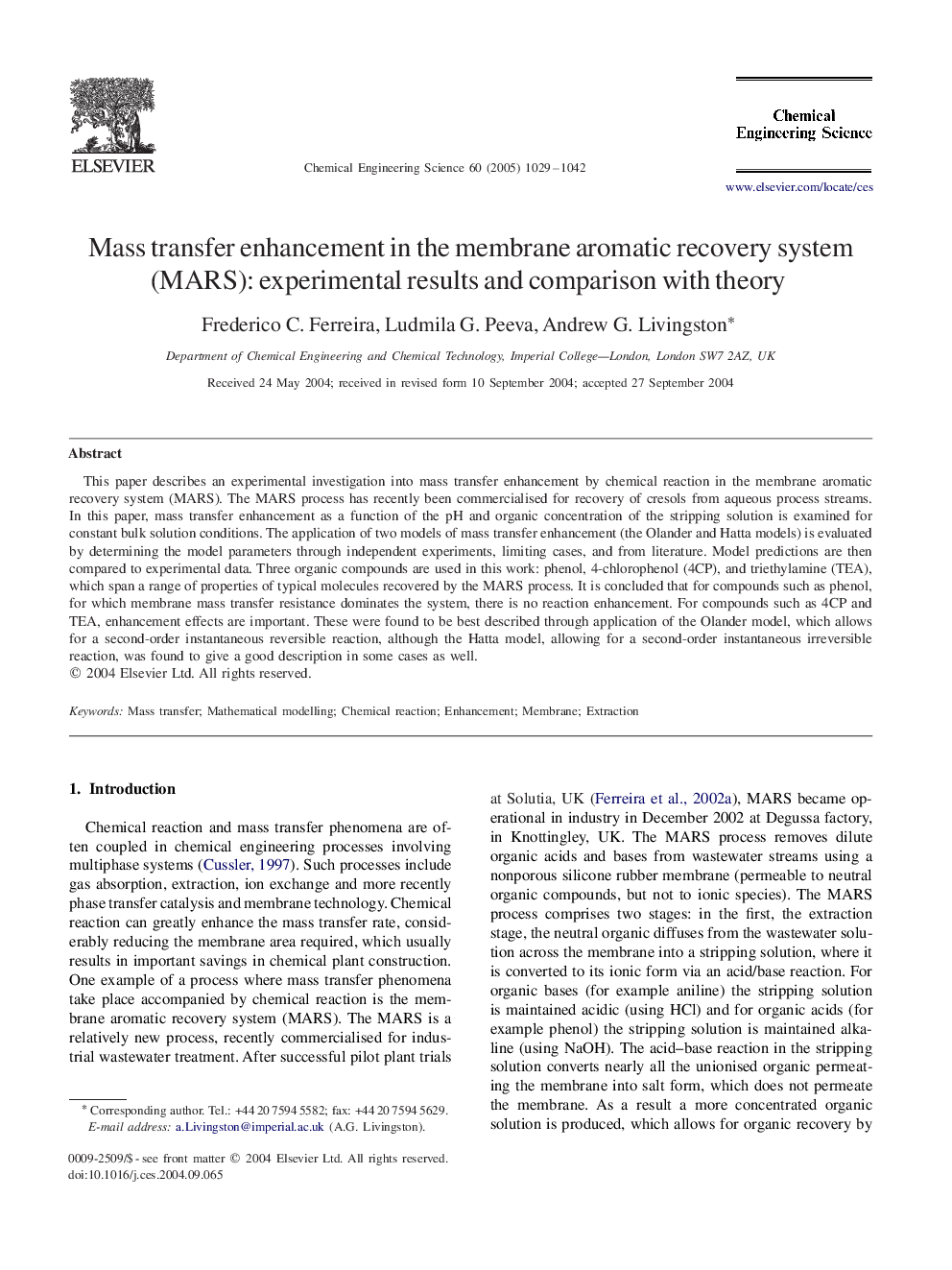| Article ID | Journal | Published Year | Pages | File Type |
|---|---|---|---|---|
| 10263646 | Chemical Engineering Science | 2005 | 14 Pages |
Abstract
This paper describes an experimental investigation into mass transfer enhancement by chemical reaction in the membrane aromatic recovery system (MARS). The MARS process has recently been commercialised for recovery of cresols from aqueous process streams. In this paper, mass transfer enhancement as a function of the pH and organic concentration of the stripping solution is examined for constant bulk solution conditions. The application of two models of mass transfer enhancement (the Olander and Hatta models) is evaluated by determining the model parameters through independent experiments, limiting cases, and from literature. Model predictions are then compared to experimental data. Three organic compounds are used in this work: phenol, 4-chlorophenol (4CP), and triethylamine (TEA), which span a range of properties of typical molecules recovered by the MARS process. It is concluded that for compounds such as phenol, for which membrane mass transfer resistance dominates the system, there is no reaction enhancement. For compounds such as 4CP and TEA, enhancement effects are important. These were found to be best described through application of the Olander model, which allows for a second-order instantaneous reversible reaction, although the Hatta model, allowing for a second-order instantaneous irreversible reaction, was found to give a good description in some cases as well.
Related Topics
Physical Sciences and Engineering
Chemical Engineering
Chemical Engineering (General)
Authors
Frederico C. Ferreira, Ludmila G. Peeva, Andrew G. Livingston,
